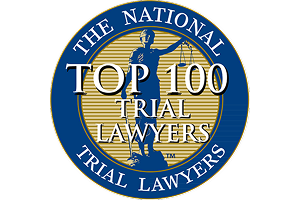Richmond, California
Approximately 5,000 years ago Ohlone Indians settled in the area of Richmond. The first Europeans to explore and settle in the area were the Spanish, and the area become part of the Spanish empire in 1772. Mexico gained control of the area in 1821 after that country gained its independence from Spain. The area then became part of the United States after the Mexican-American War of 1846-1848.
In 1899, the Santa Fe Railroad established a western terminus in Richmond. That same year railroad service and ferry service provided direct routes from Richmond to San Francisco. Industry began to grow in Richmond in the 1900s, and Richmond was incorporated as a city in 1905. Richmond became a center of industry, starting with the building of the Standard Oil Company facility in 1901. Subsequently, many industries came to Richmond, including Winehaven, Pullman Palace Car Shops, American Radiator, Standard Sanitary Company, Stauffer Chemical Company and many others. A Ford Motor assembly plant and a Felice and Perelli cannery opened at the newly built harbor of Richmond in 1931.
As a consequence of its economic growth, Richmond’s population grew rapidly — from 2,150 in 1905 to 23,600 by the end of the 1930s — and towns were created around the industry sites. In addition, business and retail sites developed in downtown Richmond. In 1925 the Carquinez Hotel opened and became the center for both civic and social life. During World War II, Kaiser Richmond Shipyards, the biggest shipbuilding operations on the West Coast, was built on Richmond’s south shoreline. The shipyard brought large numbers of workers to Richmond, dramatically increasing the population from 23,600 in 1940 to 93,700 in 1943. Most of the new residents moved to Richmond from the South to work in the shipyards, and more than 60,000 people lived in temporary public housing, many of which are still standing, while others lived in newly built apartment buildings. When the war ended, the shipyards closed and industrial production quickly declined. Also, the population decreased from 101,500 in 1947 to 71,900 in 1960.
Between the late 1940s and 1950s many new industries moved into vacated shipyard structures, including Kaiser Aircraft, Garwood, Butler, Southwest Welding, Pacific Vegetable Oil and United Heckathorn. In the mid-1950s the Richmond Redevelopment Agency began several projects that involved industry. One such project, known as the Harbor Gate Redevelopment Project, built warehouses on the site of former wartime housing and turned the city into a hub for major warehousing operations. The first warehouse operation to move to Richmond was Ford Parts and International Harvester, followed by Safeway and United Grocers. Chemical and research facilities also moved to Richmond during the postwar development period. Chevron USA and Chevron Research remain Richmond’s main industry and employer. A few other major redevelopments took place between the 1970s and 1990, which brought growth and prosperity to the city. In the mid-1970s the city’s Marina became the target for a 350-acre master-planned waterfront community. The Hilltop Mall opened in 1976 and the Knox freeway was built, which crosses Richmond?s south shoreline and connects Interstate 80 with the Richmond-San Rafael Bridge. The freeway’s surrounding area, with its seven interchanges along the shoreline, became a sought-after site for high-tech industrial, business park and commercial development. Today biotechnology and light industrial companies have found a niche in Richmond?s growing economy. As Richmond’s industry, community and ever-changing business environment continues to thrive, it has much potential for further prosperity. As of the 2010 census, Richmond’s population had grown to 103,701.
the Brod Law Firm has a history of taking great care of its clients in Richmond and the surrounding area. The firm takes tremendous pride in representing individual people, as well as small businesses, and not insurance companies or large corporations.
We are Richmond injury attorneys, and we work on a contingency fee basis in cases involving personal injuries, where we focus on very serious and catastrophic injuries. In a contingency fee-based case, unless we obtain a recovery on your behalf, no legal fees are owed. We are Richmond business attorneys, and we are always conscious of the financial interests of our clients while striving to protect their legal interests.
Directions to our San Francisco office from Richmond are as follows: Take Interstate 80 west to the Bay Bridge and thence to San Francisco and exit at Fremont Street. Merge onto Fremont Street and turn left onto Mission Street. Turn right onto Anthony Street and take the first right onto Jessie Street. The office is at 100 Pine St #1250.







